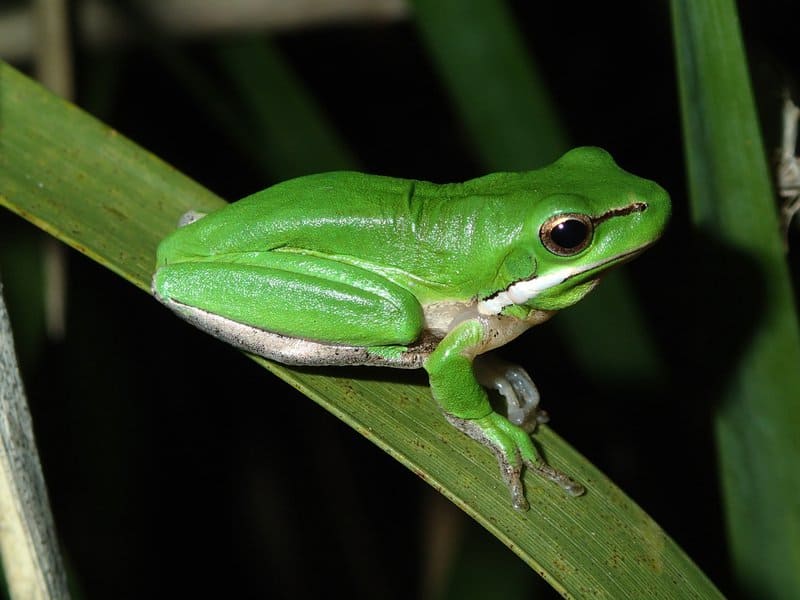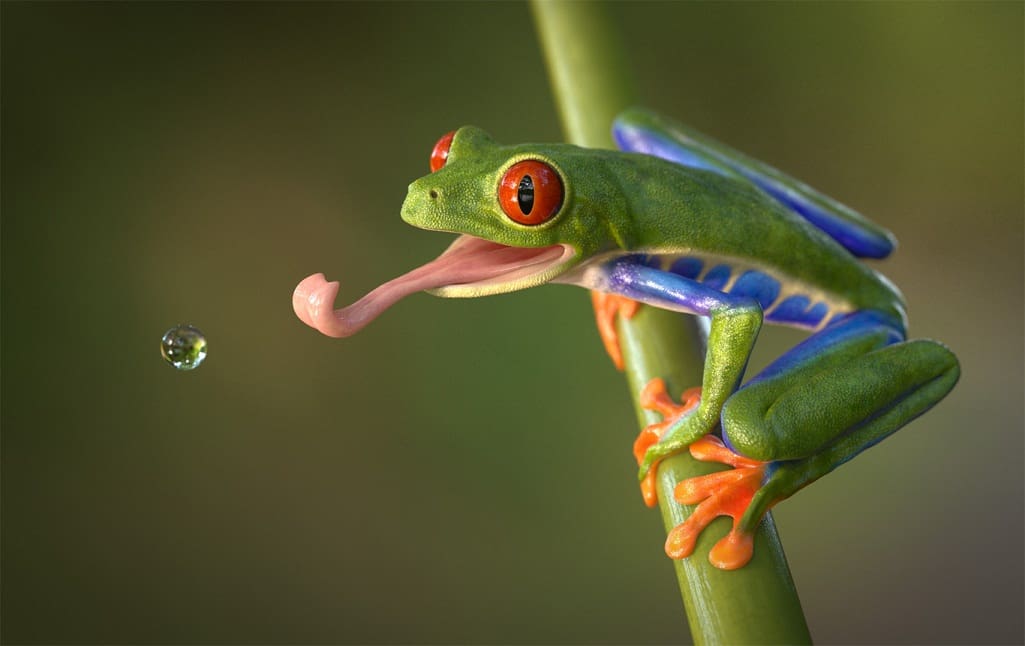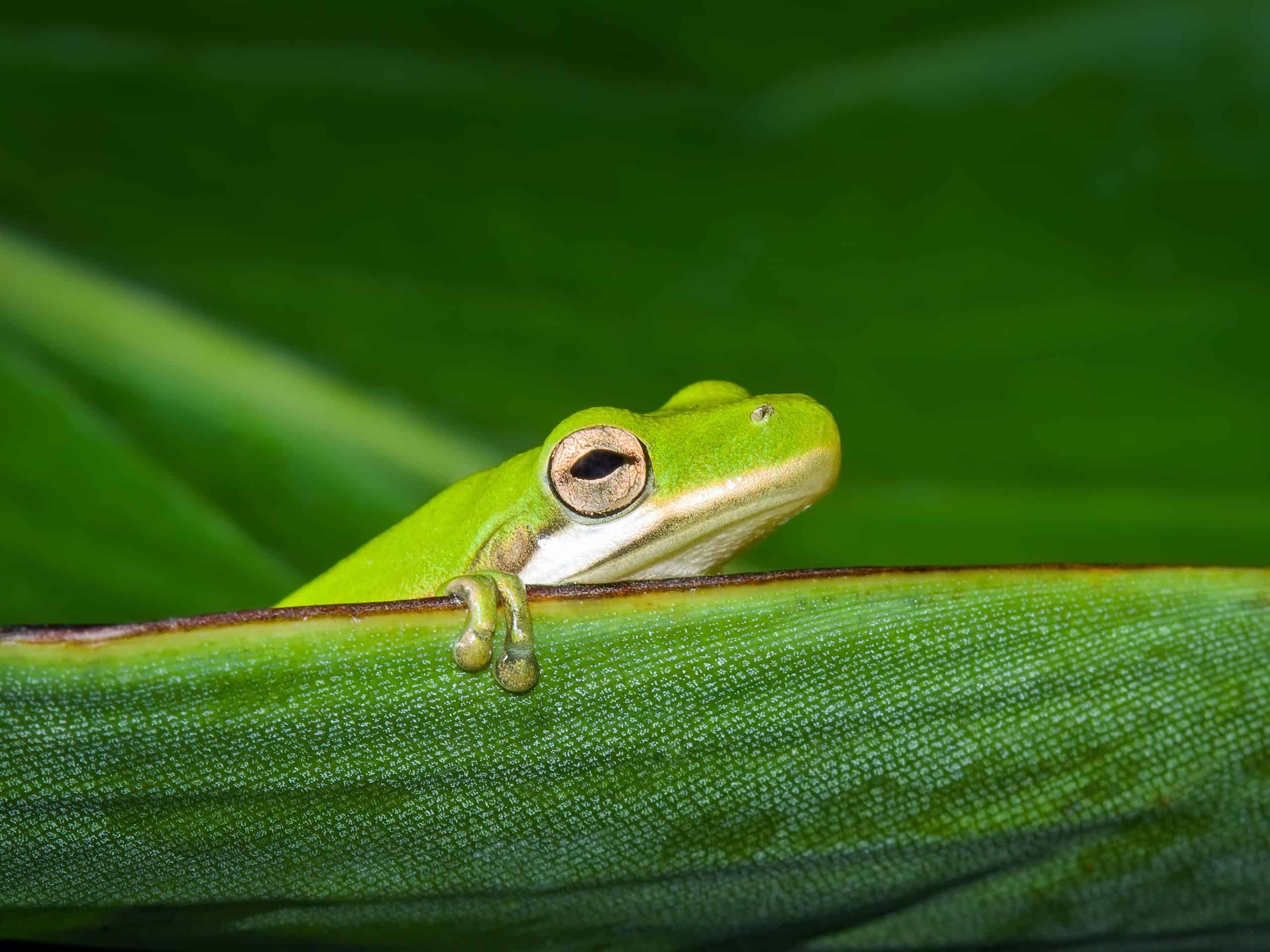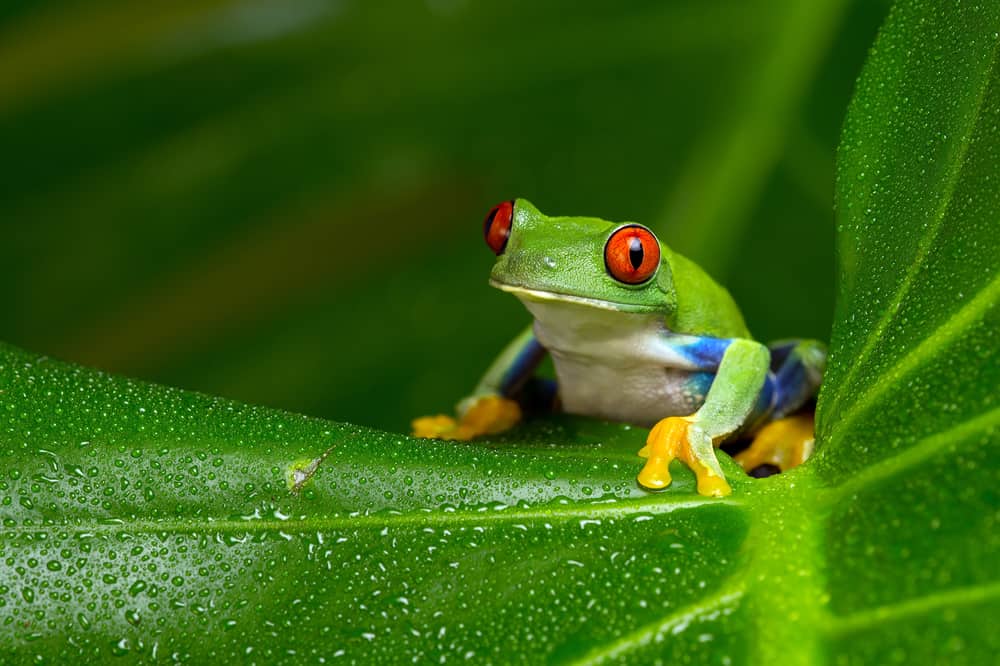When thinking of frogs, do you feel disgusted, or do they remind you of a certain fairy tale? Maybe you have one as a pet, or think of getting one? If the answer to the last question is positive, you probably want to learn as much as possible about these creatures.
Tree frogs are especially popular among those who are fans of unusual pets, mostly because of their tiny size. Tree frogs, as their name suggests, are usually found in the trees or other high vegetation.
Some Facts About Tree Frogs
This amphibian family includes more than 800 different species. They come in many colors, including green, brown, and gray, and some can even change their color like a chameleon. The world’s smallest frogs, with a size of less than 1 inch, belong to the tree frogs family.
The female tree frogs are significantly larger than their male counterparts. Tree frogs, like the vast majority of other species of frogs, are nocturnal, which means that they are most active during the night.
The famous “ribbet!” frog sound that can be heard in most Hollywood movies belongs to the Baja California tree frog. This is the mating call made by male frogs to their female counterparts. Although they are amphibians, these frogs are not great swimmers.
The vast majority of tree frogs begin life as tadpoles; however, certain species begin life as miniature adults. Unfortunately, environmental changes have a significant impact on these fascinating frogs, which places them among the groups that are most sensitive to the risk of extinction.
Habitat of the Tree Frog

Tree frogs can be found all over the world with the exception of Antarctica; however, the vast majority of tree frog species are located in the western hemisphere, particularly in South and Central America, where more than 600 species of tree frogs can be found.
In the wild, they prefer to live in tropical or semitropical climates in marshes, woodlands, and forests. Their habitat needs to be high in humidity, and close to a large body of water.
Habitat of the Tree Frogs Living in Captivity
In captivity, tree frogs need to live in big enough terrariums. The terrarium needs to be at least 18 inches high and filled with branches, vines, and plants that will serve as a substitute for the trees.
Keep in mind that the recommended size of the terrarium could vary depending on the number of the frogs. More frogs will need more space to thrive. Apart from branches and plants, tree frogs will need a small dish filled with water.
Frogs living in captivity need a lot of humidity and appropriate temperature. The exact values for humidity and temperature depend on the tree frog species.
What Do Tree Frogs Eat?
As tadpoles, tree frogs are herbivores. Once they reach their maturity, adult tree frogs are insectivores.
What Do Tree Frogs Eat In The Wild?
Adult tree frogs are insectivores with opportunistic feeding patterns when they are found in their natural environments. This means that their diet consists solely of arthropods, such as ants, crickets, mealworms, beetles, moths, spiders, and other types of small invertebrates. On the other hand, they adapt their diets to reflect the resources that are readily available in the surrounding habitat.
- Feeding Habits of Different Tree Frog Species
For instance, the American green tree frog typically inhabits marshy habitats and, as a result, obtains the majority of its nutrition from insects such as mosquitoes and flies. Ants and beetles make up the majority of the Gray tree frog’s diet.
The Red-eyed tree frog loves to feed on flying insects, such as flies, moths, and grasshoppers.
However, when there is no other source of food available, it will occasionally feast on smaller frogs. This sort of cannibalism is a behavior that is exhibited by Cuban tree frogs as well as Japanese tree frogs.
- Young Tree Frogs
Tadpoles and baby frogs need a different diet, though. They feed on algae and other aquatic plants since these foods are abundant and simple to acquire. These plants are also rich in Vitamin C, which is vital for a tadpole’s growth and development into an adult frog.
What Do Tree Frogs Eat In Captivity?
Although life in captivity is in no way comparable to life in the wild, tree frogs still require an adequate diet to maintain their physical well-being. It doesn’t matter what kind of tree frog you keep in captivity; their diet is basically the same, and it comprises various insects including crickets, worms, and grasshoppers.
These food sources are abundant in protein, and they can typically be found in most pet shops. However, the tree frog’s diet should also include a variety of other insects in order to ensure that it contains a wide range of foods that provide all of the essential nutrients. You can feed your tree frog with spiders, larvae, snails, locusts, small mice, earthworms, and slugs.
Nevertheless, keeping tree frogs in captivity still poses some difficulties when it comes to providing them with a diet that is essential to good health. Because of this, it is important that tree frogs kept in captivity eat food that has been sprinkled with calcium and multivitamin supplements at least once a week.
- How Often Should Tree Frogs Be Fed?
Tree frogs that have reached adulthood should be fed once every two days, and each meal should consist of three or four insects. Before your tree frog consumes the insects, you should make sure those insects are gut-loaded and fed with a high-protein and nourishing diet beforehand. This will guarantee that the frog consumes as many nutrients as possible.
Juvenile specimens should be fed each day. Additionally, smaller frogs need to be fed more regularly, whereas larger frogs need to eat less frequently as they mature. Tree frogs of all ages, including juveniles and adults, should never be without access to clean and chlorine-free water.
Tree frogs require more food in the spring or summer than in the winter. Make sure not to overfeed them, as they are opportunistic feeders, which means they eat whenever they can. This can lead them to become obese, especially if they don’t have a lot of space to move.
- How To Tell If Your Tree Frog Eats Too Much
If you notice your tree frog getting obese and overweight, cut back on the meals and try to give it more space to move by getting a bigger terrarium or introducing taller branches.
You could also introduce still-alive grasshoppers and crickets to your frog’s terrarium. This will keep your frog entertained, and it will help it burn more calories while hunting.
How Do Tree Frogs Hunt?

Although they can live in different habitats and feed on different insects, the tree frogs have similar hunting and feeding patterns. Since they are mostly nocturnal animals, they hunt during the night.
Their eyes are adjusted to low-light conditions, which helps them see their prey in the dark. Tree frogs’ eyes are facing forward which enables them to follow the insects more closely and strike them with precision.
Many tree frogs prefer the moving prey over the large prey. This is because frogs can’t chew and they need to swallow their prey whole. However, some tree frog species are known to feed on small bats or even snakes.
Tree frogs have adhesive feet. Their toe pads are filled with sticky fluid which helps them hold on to various surfaces and get closer to their prey.
The tree frogs use their tongues to catch their prey. Then, they hold their prey in their strong jaws and use their front legs to force the prey inside the mouth.
Tree frog’s saliva is thick as honey, but it liquefies once the prey gets in the mouth. This way, the prey becomes fully covered in saliva, which makes it impossible to escape.
What Are The Predators Of Tree Frogs?
Tree frogs have many predators among mammals, birds, fish, snakes, and reptiles. That is also one of the reasons for them being nocturnal animals – they are trying to avoid being eaten.
Birds like blue jays, owls, and hawks feed on tree frogs. Larger fish and water snakes feed on tadpoles and juvenile frogs. That’s why some tree frog species lay their eggs exclusively in the waters that contain no fish.
The tree frogs are most in danger when they get off the trees and step on the ground, where they don’t have the advantage of camouflaging with the tree canopy. There, they are hunted by squirrels, raccoons, and otters.
Probably the most dangerous tree frog predators are snakes. Tree boa and rat snakes are not only great climbers, but they are also able to track the chemical compounds produced by tree frogs.
How Do Tree Frogs Defend Themselves Against The Predators
Tree frogs have several defense mechanisms that help them defend themselves against various predators. For example, when they are approached by a predator, most frogs puff up to appear bigger.
Some tree frogs play dead in order to make themselves look like a not appetizing meal. Some urinate, and others scream or bite their predators.
Some tree frog species have poisonous glands on their bodies. Those glands ooze the poison when the frog is stressed, which repels the predators.
While many frog species try to blend in with their surroundings to avoid being spotted by a predator, some frogs actually use the bright colors of their bodies as an advantage. Many predators instinctively avoid brightly colored prey because it might be poisonous.
Tips On Keeping Your Tree Frogs Healthy

We list some tips to help you keep your tree frogs healthy below.
Choosing and Setting Up The Terrarium
Since the tree frogs are arboreal animals, meaning they prefer to spend their time in the trees, their cage and tank should be as tall as possible. Try to find a minimum of 10-gallons tank.
Once you find a tank of appropriate dimensions, you should fill it up. For the floor, use reptile carpet, coconut fiber mat, or other substrates such as moss, cork bark, smooth gravel, or cypress mulch.
Add various branches and plants into the tank. This is where your tree frogs will climb and spend much of their time. Make sure to do a little bit of research and choose non-toxic plants for the terrarium.
Add a shallow dish filled with water. Here is where the frogs will come to bathe and drink. Always make sure to keep the water clean.
Some Other Terrarium Requirements
- Humidity: Keep the terrarium in pristine condition by cleaning and sanitizing it every week. Make sure to maintain the right humidity levels in the terrarium, as too little or too much humidity can both cause the frogs to get sick.
- Temperature: Frogs thrive in similar temperatures as humans, with the optimal temperature range being 70 to 75 degrees Fahrenheit (20 to 24 degrees Celsius).
- Light: Since tree frogs are nocturnal animals, they will mostly sleep during the day. They don’t need any additional lights, but you can set up a UVB fluorescent light tube that can be beneficial to your frogs by helping them metabolize calcium.
General Tips
Proper nutrition is extremely important to tree frogs. Their health depends on eating vitamin and protein-rich food. When possible, try to offer a variety of food options to your frogs.
Apart from cleaning the tank, you don’t need to clean the frogs, except in specific situations. If you notice your frogs becoming lethargic, swollen, stop eating, or start drooling, you should take them to the vet. Also, if you notice any weird discharge coming out of their skin or eyes, contact the vet immediately.
If you take good care of your tree frogs, their average life span should be about 8-10 years, which is impressive for these animals, especially when compared to the specimens living in the wild, who usually live between 3 and 6 years.
Conclusion
Tree frogs are perfect pets for those who love unusual and exotic animals. They usually come in small sizes, and apart from some general requirements, it is relatively easy to take care of them.
However, tree frogs are not completely low-maintenance animals, because they need adequate food, space, humidity, and some other conditions to keep them healthy and long-lived.
If you are certain you can provide all of these conditions, you should consider getting a tree frog as a pet. What do you think? Would you ever keep this interesting animal in your home? Write in the comments?

I found a live grey tree frog in my house. It should be hibernating right now, but it’s winter out so I can’t just put it outside. I have a crawl space beneath the house, that isn’t frozen yet, could I put it there? How long does it take for them to acclimate and prepare for winter? I’d rather not keep it as a pet until spring. Help.